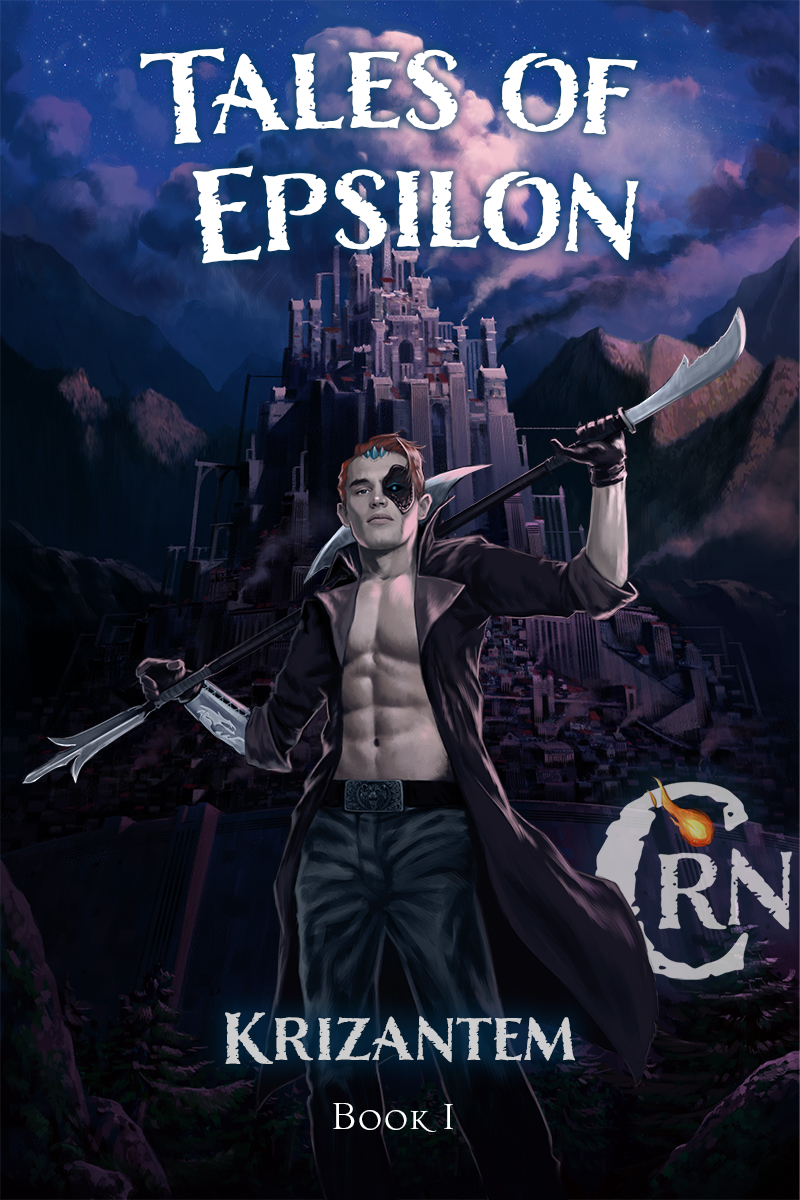.
Suppressing a laugh at the weirdly complex threat, I nodded.
“I understand. Hang in there, Chief.”
“Captain Resnik…” the lieutenant began.
“Thank you!” I snapped back at him. “I’ve been wondering whether or not you were aware that the way to address me is ‘Captain’, not ‘Kid’!”
His eyes open wider and he didn’t continue. I finished, “That is my ship’s lander out there, Lieutenant, and I’m going out to have a look at it now. Unless you have something more constructive to say to me, you’ll have to follow me out there to continue this conversation.”
He continued to scowl at me, shaking his head, but I think he was beginning to get it through his head that I outranked him.
This wasn’t back home, away from combat duty, where a Youth Aviator is a minor and subordinate to any adult commissioned officer. I was in the middle of an operation, where the chain of command had more value than adult versus minor. Under combat conditions rules, I currently outranked him by two grades. I was equal to a Surface Corps ‘Sub-major’, the ESDF’s name for an Army captain.
Confident now that I had his cooperation, I added, “Once the climate control is working in my craft, I want you to begin transferring the wounded out to us. We’ll be lifting off after sunset.”
Wording it that way made it final. I was now the aviator responsible for the downed spacecraft, not an uninvolved visitor.
As the four of us walked out to the lander, I finally had a chance to ask Joss, “PTO, you need to get me up to date. Exactly how did you arrange a ceasefire for us to land?”
Martins gave a laugh and said, “I was about to ask precisely the same question.”
“It only required a request to stop shooting, Captain. The one firing was the Ondo at this base.”
The only structures I could see at this installation were Human construction, and so I had assumed that the ‘Ondo’ to whom we were bringing supplies were merely somewhere nearby. It is normal for races to segregate themselves at bases that contain more than one species. Only cases like Zindavoor and Human, where the races are accustomed to working together, tend to mix.
It isn’t prejudice. It is simply very difficult to avoid getting in each others’ ways and messing things up, thanks to the high hurdle of mutual understanding. Frankly, we probably couldn’t have Zindavoor integrated so well into the ESDF if they didn’t have hundreds of years of practice at acting more-or-less like Humans and working together in a Human way. And if they didn’t have a really heavy psychic empathy ability that allowed them to tell quickly when they weren’t doing it right.
It took several confusing exchanges that I won’t try to reproduce before Joss was able to correct my false assumption. We learned that the reason we couldn’t see any aliens other than the Zindavoor walking next to me was that the Ondo was under our feet.
That’s singular. There was only one Ondo.
“Only one?” I repeated.
“It is a colony organism, Captain,” Joss explained. “Groupings within the colony specialize into subsystems the same way as organs in Zindavoor and Human bodies, but it is, in the end, one individual creature. It’s a bit like a fungus, living inside the soil, except it is sentient. Most of the crates Farley was bringing down contain certain nutrients lacking in the local life that it has been feeding on.”
“But it fights? The SCs speak as if it’s operating an important defense system.”
“It does. Its subsystems are capable of operating tools such as weapons, the same as any other sentient creature does, Captain.”
I really couldn’t imagine a fungus that lives in the soil evolving intelligence and the ability to use tools, but the universe is vast, you know?
“And it’s what was firing on everyone?”
“Beyond the node below us, the Ondo has four other nodes in this area. In the same attack that took out the lander, the node which communicated in Human language and operated Human communicators was damaged and lost that ability.”
“Wait. It’s all the same creature, but only one part of it could communicate to Humans?”
“In the Human brain, only one part can use language. If that part is damaged, even if th rest of the brain is whole, the entire creature loses the ability. An analogous part of the Zindavoor nervous system governs Zindavoor communication. In this case, only one body had learned how to speak English.”
“So… what happened next?”
“Thanks to the loss of that node, it could also not longer distinguish friend from foe, so it chose to defend against all aerial threats up to an altitude similar to the Human measurement of five kilometers.”
“So what did your presence change, PTO?”
“The Ondo is sufficiently Sensitive to exchange mind-glyphs. Communication in that fashion enabled the identification of the Luna Moths as friends.”
In other words, once Joss had come along, the alien finally had someone it could communicate with.
“So when you leave here, it will again be unable to communicate.”
“This soldier is helping it re-learn English. It did retain most of the amount of information on that subject, and simply needed assistance to decode the information as it grows a new node capable of it. It will safeguard that node underground this time.”
“And it will be able to put this base back in communication? Headquarters can’t contact the local troops here. They may not know these guys are even still alive.”
“The local troops have only short-range gear. Their field radios were lost in the attack. This soldier has begun to re-establish communication with their command. The communication gear I brought will remain to maintain that link, and the Ondo is currently growing a new means to speak directly to the local soldiers.”
Martins noted, “We should also tell our people to move a Zindavoor or two closer, in case the Ondo falls out of communication again. If they were formerly communicating with it by radio, they may not know it can communicate with Sensitives.”
Something occurred to me, maybe because of the repeated use of the term ‘Communicate’. “PTO, you came down here on Farley’s first trip down. Did you realize that you could contact the Ondo before you air-dropped in?”
“Correct, Captain. The Ondo exchanged greetings with this soldier during that previous trip. However, it was not known whether the Ondo was the one destroying all aircraft in the area before the air drop. It may have been an enemy. This soldier had to get close enough to confirm the theory.”
“In which case you would have proceeded as we planned. But why didn’t you tell us in advance that this was possibility?”
“To arrogantly proceed on a personal suspicion is not appropriate. As such, this one conducted the planned mission until that communication was established. It was a question of appropriate action.”
“That’s not what I meant, PTO. Just letting me know you have a guess at a potential alternative explanation would not be arrogance. Please tell me, next time.”
We had reached the lander at this point and all began depositing their shares of Red’s equipment and repair materiel. Joss turned a puzzled frown my way as she set down the container for Red’s welder, but she didn’t say anything further. I guess she had concluded the same thing I had just realized. We were hitting one of those Human-Zindavoor communication walls that pop up from time to time.
The lander, it turned out, was not in terribly bad shape. Some sort of explosive round had punctured the main tank, but it turned out the wing tanks were actually intact, to Red’s relief.
“The wing tanks don’t carry enough mass to get us away out of Sebka combat radius for Mo to pick us up, but it’s plenty to get us over to friendly territory,” Red declared. “I can do the rest of the repairs there. I just need to close the main tank off so we don’t lose what’s in the wing tanks.”
I inputted the keys along with both Red’s ID and my own, then entered and tried out the cockpit controls. The reason for Farley’s failure to report his situation was immediately apparent; a piece of schrapnel had hit the communications module. But all the flight controls and the computer passed diagnostics.
After we moved the gear and tools into the main cargo bay, where all the access panels Red needed to open are located, Martins asked, “So it’s just a matter of shutting the main tank out from the propellant feed into the jets?”
Red shook her head. “I was just talking about the propellant system. I need to make hull patches as well, to make her airtight. It’s a good thing Colin didn’t try to fly it into space.”
“But you can do it?” I asked.
“Definitely,” she confirmed. I liked the confidence in her voice. It felt like my plugger had finally come back.
“Well, I’ll be off, then, ” Martins declared and stuck her hand out. After I accepted her handshake, she trotted back toward her ship. Red and I had rifles, but she was unarmed , so Joss accompanied her. The first hints of dawn were appearing as she steamed up and took the Moth back up.
Joss and Karimi were outside keeping an eye out for the Enemy, so I was mostly just handing Red tools, running tests through my nerveware, that sort of thing. After opening up the panel into the space where the propellant feed pumps were located and lying on her stomach so she could stick her head and arms in, she paused.
Glaring at me, she stated, “I’m still not happy about you risking your neck like this, you know.”
“I know,” I answered. “You’ve made that clear.”
“And yet here you are!”
“And yet, here I am.”
“Why?!”
“Because this is where I need to be, Red.”
She pressed her lips together, tears starting to form again, then she let out an exasperated sound that I could almost call a growl and stuck her head into the access space.
A moment later, I heard her say, “Hand me those big vise-grips.”
I smiled and found the aforementioned tool, putting it in her hand.









